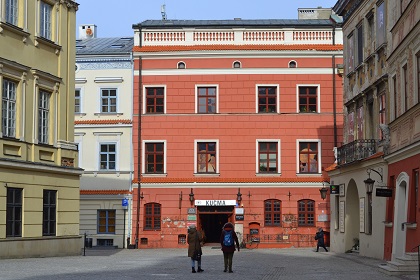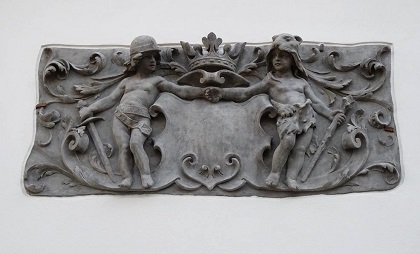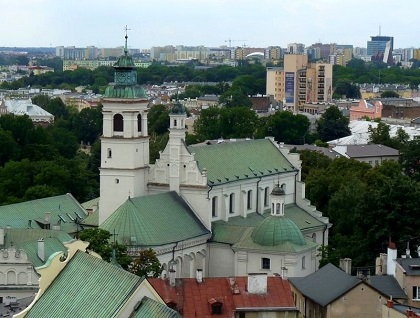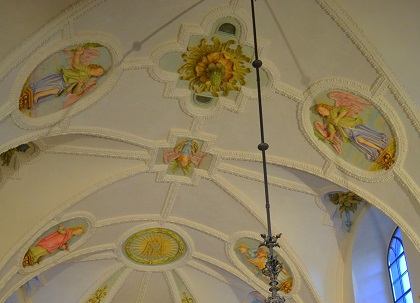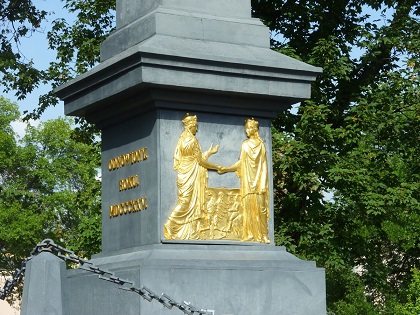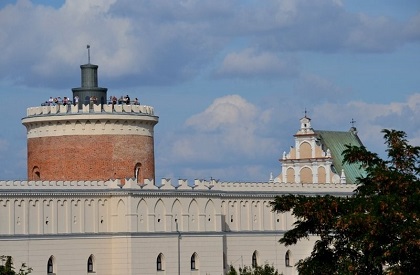Jagielloński Szlak Unii Lubelskiej

Is one of the most interesting burgher houses at the Old Town. It has an original Renaissance portal with the Zadora coat of arms, the date 1540, and initial of the name Jan Lubom. In 1996 precious polychrome decoration was discovered, depicting the view on the XVIth century town. In a former wine cellar there are Renaissance secular paintings referring to ancient culture and mythology, together with Latin and German sentences. ...

One of the most important monuments of Lublin is the church and monastery of the Dominican Order. The Dominicans arrived in Lublin in the 1230s. In 1342, after the Tatar invasion, King Casimir the Great ordered building a Gothic,single-nave, brick church in place of the previous, wooden one. It was named as the church of St. Stanislaus Bishop and Martyr. ...

The church and the cloister was build for the Bernardine Order between 1473 and 1495 from the funds of Lublin townspeople. The reconstruction by Rudolf Negroni and Jakub Balin in the first half of XVII century had a direct impact on shaping the Lublin Renaissance style. The church became an exemplar for other temples erected in the Lublin Region. ...

The church was built in the years 1412–1426 for the Birgittine Order as a votive offering of King Ladislaus Jagiello for the victory in the battle of Grunwald predicted by St. Birgitta. According to the tradition, the church was erected by knights of the Teutonic Order held captive after the battle. ...

The name of the square derives from the first parish church built within the town walls – st. Michael's parish church. According to a legend, it was Leszek The Black who founded it in the 13th century to express his gratitude for the victory over the Yotvingians. In 1569, a service was held in the temple for the sake of the Union of Lublin. In 1856, the tsarist authorities made a decision to dismantle the church due to the safety hazard posed by the poor technical condition of the building. Today we can see the outline of foundations and a bronze model of the church. The house in t ...

Located at the Litewski Square the Memorial of the Union of Lublin was erected thanks to Stanisław Staszic in 1826. It commemorates one of the most crucial events in the history of Lublin - the Polish-Lithuanian Union from 1569. The place where the monument stands is not accidental - this is where the Lithuanians who came to the Union Seym set up their camp. The project of the monument was presented by Feliks Bentkowski, and the author of the relief was Paweł Maliński. The gilded relief depicts two female figures shaking hands. Between them there are the coats of arms of The Crown and ...

The Lublin Castle is one of the architectural and historical symbols of Lublin. It is believed that already in the VI century AD there was an early medieval settlement at the Castle Hill, as the natural values of the hill favored the establishment of a defensive, wooden structure. In the XII century it was a seat of a castellan, and in the XIII century a tower called donjon was built that we can admire to this day. The crucial date in the history of the castle was the year 1341, when the Tatars invaded Lublin. After this event, king Casimir the Great decided to built a brick castle in place of ...




